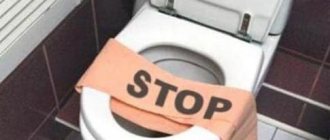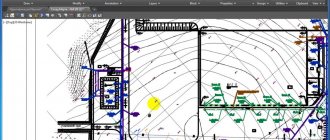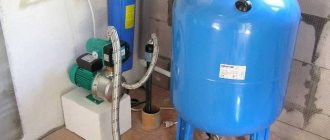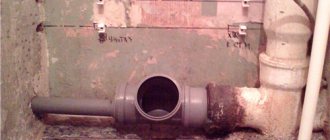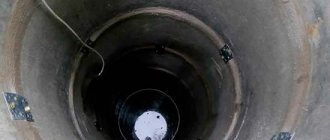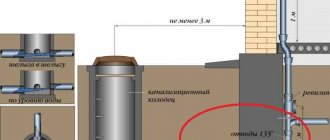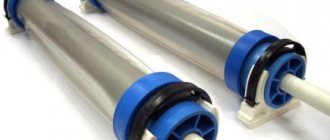Several years ago, reports appeared in the media and on the Internet that sewerage blocking would be applied to debtors - a special measure for housing and communal services.
It was reported that this method of influencing unscrupulous homeowners is much more effective than any other options for obtaining debt. Among residents of apartment buildings, this method caused a lot of controversy and doubt about the legality and the very possibility of performing such a procedure. Let's try to understand its features together.
What it is
Sewer blocking is a last resort measure designed to force debtors to pay for utility services received. At least, this is what officials say, whose task is to collect money for the use of housing and communal services. The idea is simple - the debtor is limited in his ability to use the sewer by installing a plug at the connection area to the riser.
The equipment for installing plugs on the sewer is a special valve that is lowered into a vertical pipe to a certain level and fixed in it so that the throughput of the outlet area does not allow the removal of human waste products and other organic waste. Wherein. According to the equipment developers, water can easily pass through this plug.
The sewer blocking system is not installed at the top of the riser by accident. Firstly, not a single apartment owner will allow management company employees to carry out this procedure. Secondly, installing the plug from the inside will require partial disassembly of the internal section of the system. This is a difficult job that cannot be done without the written consent of the apartment owner, which he, of course, will not give.
Since debtors had not previously used equipment to block sewer systems, since it simply did not exist, special kits had to be developed for installing plugs. They consist of several devices and instruments:
- video surveillance system. It is necessary to accurately determine the location of access to the debtor’s apartment;
- a manipulator that allows you to work remotely in confined spaces;
- the plug itself, which is installed on spacers so that there are no obstacles to the passage of drains from apartments on the upper floors.
There are several similar complexes that work on the same principle. They claim that it takes no more than 15 minutes to dismantle the plug. However, to what extent this corresponds to reality is unknown, especially since the work is performed not by the management company employees themselves, but by specially invited people from specialized organizations.
Methods for removing plugs
You need to immediately understand the following point: pneumatic plugs for sewage systems cannot be removed with chemicals. The reason is simple: the same materials from which the pipes are made are used to make the plugs, therefore, by destroying the obstacle, the sewage system in the apartment building is also destroyed - and its repair can cost much more than paying off the debts.
Thus, the most affordable method of removing the plug is to use mechanical methods. This is the most correct answer to the question of how to remove a plug from a sewer. Naturally, the plug stays in the pipe more firmly than a floor rag that gets there, but sufficient effort should be enough.
So, the first and most accessible method involves removing sewer plugs for debtors with a plunger.
How does this happen:
- Before you remove the plug from the sewer yourself, you need to understand where the plug is located. To do this, it will be enough to tap the pipeline: in filled places the sound will be dull, and in empty places it will be ringing.
- If the sewer system was not used after installing the plug, then you need to find a plumbing fixture located as close as possible to the main line.
- Now you need to run water in this device and wait until it reaches the drain grate.
- The plunger is installed above the grate, after which it must be pumped several times to create increased pressure in the system. Water is not compressible, so the pressure will cause it to act on the plug, forcing it out of the system.
If the installation of the plug in the sewer was performed poorly, then these actions will be enough to solve the problem. The only thing you should always remember before removing a plug from the sewer yourself is that a fallen plug can get stuck in the main, after which the use of the sewer will be closed to all residents.
If the plunger does not help, then you can use a plumbing cable, which is also a good way to remove the plug on the sewer pipe. More information about using a plumbing cable can be found in articles dedicated to this device. In short, a plumbing cable will allow you to remove the plug and push it out, resulting in the drain being cleared. In addition, you can make a plumbing cable with your own hands, which will simplify the task.
As a last resort, if all else fails, you can dismantle part of the sewer and get to the right place. Sometimes even this method allows you to fix the problem without any problems.
Conclusion
The fight between defaulters and utility companies has been going on for quite some time, and both sides are constantly coming up with new methods to fight each other. The plug on the sewer pipe is installed using high technology, but residents respond no less inventively. Be that as it may, it is always much better to pay all bills on time and sleep peacefully.
What equipment is used
There are several designs that are variations of the same design. Currently, there are different types of devices:
- mechanical;
- pneumatic;
- on an electric drive.
All these kits work according to the same scheme; only the method of fixing the plug in the riser changes. Among the popular models, the following designs should be noted:
- KIT system sewer blocking. This is a set of mechanical devices, the development of which began back in 2007 by engineers from the Kommunal-Service Research and Production Enterprise. Mechanical plugs provide reliable fixation in the pipe, leaving no opportunity for the debtor to remove it themselves. A reliable lock and thick metal will not allow the element to be deformed or removed in an abnormal way;
- Sprut system for blocking sewerage. This is a set of devices consisting of a manipulator, a video camera and a long probe. The probe is immersed into the pipe under pressure. A video camera with LED backlight allows you to precisely adjust the position of the plug opposite the outlet of the outlet to the debtor’s apartment.
In addition to these kits, there are other developments - Glot, SOV and others. All of them are installed from a waste pipe and, according to the manufacturers, provide reliable shutoff of the riser from the apartment line. There is no information to what extent these devices guarantee the absence of problems for residents of the upper floors or the entire riser. If manufacturers claim complete safety and trouble-free operation of systems, then experienced people have many doubts about this. However, the equipment is available and can be purchased and used.
Installation of a sewer blocker
Before blocking is carried out, the work team carries out calculation operations that make it possible to establish the exact distance from the point of entry into the riser to the point where the drainage system is turned off. Special cameras are used for this. After receiving the results, the sewer blocker is installed in the calculated hole.
The blocker is pushed into the sewer pipe through the vent, where it blocks the drainage hole. The pipe does not change its geometry, and neighbors in an apartment building do not have problems using the sewer system.
The Federal Law “On Water Supply and Sanitation” determines the right of management companies to block water drainage independently , with the involvement of contractors. Plugs can be made of different materials, so their service life differs. The installation of a blocker should not affect the interests of other owners of living space in a multi-storey building.
The “Rules for the provision of utility services to owners and users of premises” (clause 122) states that the established limitation of water supply should not interfere with living or violate the requirements for the suitability of housing for other residents of an apartment building.
Important! If for some reason the restriction of water supply and sewerage entails a violation of the rights of other owners, the court has the right to impose a ban on the blocking.
How legal is this procedure?
Disputes about the legal viability of the procedure for blocking sewers have not ceased since the first days of the appearance of such devices. The only justification for housing and communal services workers is the lack of mention of sewerage systems in the list of communications that cannot be disconnected if there is a debt. Only cold water and heating are indicated, which became a loophole for management company employees.
In general, they can be understood. The amounts of debt are huge, and the defaulters are often quite wealthy people. Litigation lasts for years and does not give the desired result. Installing a plug dramatically speeds up the process of paying off debts.
However, this measure is largely contrary to the law. The fact is that no one has the right to prevent their owner from using communications. In this case, it is not resources that are used, but a network of pipelines. In addition, there is a danger for other owners, since the sewer riser belongs to the common property of the house. There is one more point - according to the Supreme Court, the suspension of service must not pose a threat to the health of others. This means that blocking can only be done in relation to the owner, but it should not affect members of his family.
As a rule, management company employees do not comment on these arguments. They motivate their actions by the impossibility of collecting debts. However, there are mechanisms clearly defined in the laws that must be used. Otherwise, the actions of the management company become ordinary amateur activities. The owner can remove the plug from the apartment; this is legal and technically possible. There are even companies that provide similar services for a small fee.
Also read: Installation of a sewage pump: principle of operation, types, installation rules
Restoring access to sanitation
The Federal Law “On Water Supply and Sanitation” states that if a procedure for terminating or limiting water disposal is introduced in relation to a subscriber, he is obliged to compensate the utility service for the costs of introducing a temporary restriction of access to the service.
Reimbursement is carried out on the basis of the estimated estimate. The document is prepared by the water supply and sewerage organization. The estimate is formed on the basis of documented expenses incurred by the communal structure (clause 4.5 part 1, clause 2-5, 8.9 part 3 of Federal Law-416).
In accordance with the Rules for the Provision of Public Utilities, 2 working days . The specified period will be counted from the moment the application for renewal of the service is delivered to authorized representatives of the management company.
Removing a sewer blocker
The blocker can be legally removed only after the utility debt has been fully repaid. As soon as the debtor has fulfilled his obligations, he must contact the management company with a corresponding request. After checking the information, specialists will visit the site and remove the blocker.
It is not recommended to remove the plug yourself.
This may lead to damage to the drainage system, which will entail the imposition of a fine on the basis of Article 7.7 of the Code of Administrative Offenses of the Russian Federation. Other residents of the apartment building have the right to file a claim against the violator. And also to recover material and moral damages from him.
How to install
Equipment for blocking sewerage systems for debtors is not installed suddenly, at the whim of the management company’s employees. First, you must send the debtor a notice of the debt. Then, if no action occurs on his part, a warning follows about restricting the use of the drainage system. The last step is to notify you of the date and time the plug will be installed.
The procedure takes place within a few minutes. First, the riser is examined and a branch to the debtor's apartment is discovered. Then a device for blocking the sewer is lowered on a cable and fixed in a given place. This completes the first part of the process.
After paying the debt (or concluding an installment agreement), the apartment owner submits an application, according to which the management company employees must remove the plug within 2 days. The fact of payment does not mean automatic removal of the device; this must be remembered and immediately notified to company employees. If there is any delay in removing the plug, this becomes a reason to file a lawsuit against the actions of the management company.
The procedure and features of blocking sewerage for debtors
The first thing that should be noted when talking about limiting and completely shutting off water drainage from an apartment for non-payment of utilities is that the debt to the management company itself is not enough. Two conditions are required:
- The duration of the debt is 2 months or more.
- Compliance with the procedure for blocking sewerage for debtors.
The first point is clear. But the second one should be discussed in more detail.
The procedure for blocking sewerage requires debtors to:
- The management company is obliged to submit a request for payment of utility services in writing. In this case there should be:
- amount and term (listing months) of debt;
- The time available to repay the debt is usually 20 days.
The document is delivered in person or by sending a letter with a list of the contents and notification of receipt.
- The management company is obliged to notify about the restriction or complete shutdown of drainage from the apartment 3 days in advance.
- The management company has the right to install a plug only if:
- there are no transfers from the debtor in the bank account;
- water supply is not suitable for restriction.
Complete shutdown of drainage from an apartment can occur:
- if the water supply has straight sections without branches;
- if there is 0.8 m of space above the riser;
- if the pipe matches the material.
Thus, under two conditions, the debt is 2 or more months old and the procedure for blocking the sewerage system for debtors is observed, the management company can draw up an agreement to disconnect the water drainage system from the residential premises.
REMOVE SEWER PLUG
Moscow , St. Petersburg , Novosibirsk , Yekaterinburg , Nizhny Novgorod , Kazan , Samara , Omsk , Chelyabinsk , Rostov-on-Don, Ufa , Volgograd , Perm , Krasnoyarsk , Voronezh , Saratov , Krasnodar , Togliatti , Barnaul , Izhevsk , Ulyanov sk , Vladivostok , Yaroslavl , Irkutsk , Tyumen , Makhachkala , Khabarovsk , Orenburg , Novokuznetsk , Kemerovo , , Tomsk , , Penza , Naberezhnye Chelny , Lipetsk , Tula , Cheboksary , Kaliningrad , Bryansk , Kursk , Ivanovo , Magnitogorsk , Ulan -U de , Tver , Stavropol , Simferopol , Nizhny Tagil , Belgorod , Arkhangelsk , Vladimir , Sevastopol , Sochi , Kurgan , Smolensk , Kaluga , Chita , Orel , Volzhsky , Cherepovets , Vladikavkaz , Murmansk , Surgut , Vologda , Saransk , Tambov , Sterlitamak , Grozny , Yakutsk , Kostroma , Komsomolsk-on-Amur , Petrozavodsk , Taganrog , Nizhnevartovsk , Yoshkar-Ola, Bratsk , Novorossiysk , Dzerzhinsk , Shakhty , Nalchik , Orsk , Syktyvkar , Nizhnekamsk , Angarsk , Stary Oskol , Veliky Novgorod , Balashikha , Prokopyevsk , Khimki , Pskov , Biysk , Engels , Rybinsk , Balakovo , Severodvinsk Armavir , Podolsk , Korolev , Yuzhno-Sakhalinsk , Petropavlovsk-Kamchatsky , Syzran , Norilsk , Zlatoust , - Uralsky , Mytishchi , Lyubertsy , Volgodonsk , Novocherkassk , Abakan , Nakhodka , Uss Uriysk , Berezniki , Salavat , Elektrostal , Zheleznodorozhny , Miass Pervouralsk , Rubtsovsk , Almetyevsk , Kovrov , Kolomna , Kerch , Maykop , Pyatigorsk , , Khasavyurt , Novomoskovsk, Kislovodsk, Serpukhov, Novocheboksarsk, Nefteyugansk, Dimitrovgrad, Neftekamsk, Cherkessk, Or Ekhovo-Zuevo, Derbent , Kamyshin, Nevinnomyssk, Krasnogorsk, Murom, Bataysk, Novoshakhtinsk, Sergiev Posad, Noyabrsk, Shchelkovo, Kyzyl, Oktyabrsky, Achinsk, Seversk, Novokuybyshevsk, Yelets, Evpatoria, Arzamas, Obninsk, Novy Urengoy, Kaspiysk, Elista, Pushkino, Zhukovsky, Artem , Mezhdurechensk, Leninsk-Kuznetsky, Sarapul, Essentuki, Votkinsk, Noginsk, Tobolsk, Ukhta, Serov, Berdsk, Velikiye Luki, Michurinsk, Kiselevsk, Novotroitsk, Zelenodolsk, Solikamsk, Ramenskoye, Domodedovo, Magadan, Glazov, Kamensk-Shakhtinsky, Kansk, Nazran, Azov, Alexandrov, Aleksin, Anapa, Anzhero-Sudzhensk, Apatity, Arsenyev, Asbest, Balakhna, Balashov, Belebey, Belovo, Belogorsk, Beloretsk, Belorechensk, Birobidzhan, Bor, Borisoglebsk, Borovichi, Bugulma, Buguruslan, Budennovsk, Buzuluk, Buinaksk, Verkhnyaya Pyshma, Vidnoye, Volzhsk, Volsk, Vorkuta, Voskresensk, Vsevolozhsk, Vyborg, Vyksa, Vyshny Volochyok, Vyazma, Gatchina, Gelendzhik, Georgievsk, Gorno-Altaisk, Gubkin, Gukovo, Gus-Khrustalny, Dmitrov, Dolgoprudny, Donetsk, Donskoy, Dubna, Egoryevsk, Yeisk, Elabuga, Zheleznogorsk, Zhigulevsk, Zarechny, Zelenogorsk, Ivanteevka, Izberbash, Iskitim, Ishim, Ishimbay, Kineshma, Kirishi, Kirovo-Chepetsk, Klin, Klintsy, Kogalym, Kotlas, Krasnokamensk, Krasnokamsk, Krasnoturinsk, Krasnoufimsk, Kropotkin, Krymsk, Kstovo, Kuznetsk, Kumertau, Kungur, Labinsk, Leninogorsk, Lesnoy, Lesosibik, Livny, Liski, Lobnya, Lysva, Lytkarino, Meleuz, Mineralnye Vody, Minusinsk, Mikhailovka, Nazarovo, Naro-Fominsk, Neryungri, Novoaltaysk , Novouralsk, Nyagan, Pavlovo-Pavlovsky, Posad-Polevskoy, Prokhladny, Revda, Reutov, Rzhev, Roslavl, Rossosh, Salsk, Sarov, Svobodny, Severomorsk, Sibay, Slavyansk-on-Kuban, Solnechnogorsk, Sosnovy Bor, Stupino, Timashevsk, Tikhvin, Tikhoretsk, Troitsk, Tuapse, Tuymazy, Uzlovaya, Usol-Sibirskoye, Ust-Ilimsk, Feodosia, Fryazino, Khanty-Mansiysk, Tchaikovsky, Chapaevsk, Cheremkhovo, Chernogorsk, Chekhov, Chistopol, Shadrinsk, Shuya, Shchekino, Yurga, Yalta.
Can sewers be turned off for non-payment?
Management enterprises in their activities rely on the provisions of the Housing and Civil Code. According to judicial practice, debt is not collected in all cases. This is due to the fact that bailiffs in cases involving public services do not have mechanisms for guaranteed collection.
Government Regulation No. 354 establishes the rights and obligations of the supplier to legally force the defaulter to repay the debt. Shutting off sewerage due to non-payment is legal.
Paragraph 117 of the Resolution states that the management company has the right to stop the provision of services in cases of lack of full payment, but after prior warning. In the same paragraph there was no mention of a court decision for such a measure. A written notification to the owners living in the house is sufficient.
Types of service
Depending on the type of product, you can remove the plug:
- Lattice . Its task is to allow liquid to pass through, but retain solid waste.
- Solid . It completely blocks the movement of wastewater in the apartment.
Removing a damping element happens:
- With analysis.
- Without analyzing the riser.
Depending on the withdrawal method:
- Chemical.
- Mechanical.
The work is classified according to the performer:
- Independent.
- Professional (by company specialists, private craftsmen).
According to the order implementation time, it happens:
- Regular (services are provided on a first-come, first-served basis).
- Urgent (the work is completed in a short time).
What to do when the sewer system is blocked due to debts
When a plug is installed, this causes a partial or complete restriction of water drainage from an apartment or house.
There are quite a lot of plug designs:
- Steel;
- Plastic;
- Inflatable;
- Lattice.
And they are constantly being modernized, since violators very often try to remove the restrictor from the pipe themselves. Such an action has quite serious consequences. One of them is clogging of the sewer drain and flooding of other apartments. In addition, unauthorized removal of a plug is a jurisdictional matter, and judicial practice has quite a lot of cases related to this violation.
If the plug was installed without warning, even malicious debtors have the right to file a counterclaim against the management company in court.
On the legality of shutting off sewerage
Of course, blocking a sewer pipe is one of the worst measures. After all, then a person cannot fully use the water supply, and living conditions in general worsen. That is why such an action motivates citizens to pay off their debt. However, there are those who are interested in whether shutting off the sewerage system is legal.
On the one hand, due to the appearance of a stub, the apartment ceases to be suitable for living. Because of this, the usable area of the entire house becomes smaller, and this can only be done on the basis of a decision made at a general meeting. Moreover, to limit the flow, it is necessary to seal, but this is impossible to do with sewerage. Therefore, the debtors conclude that this measure will be considered illegal.
However, it is worth considering the position of the court in this matter, because the decision is not always made in favor of citizens. Firstly, there is no evidence that turning off the sewerage leads to a decrease in the usable area of a high-rise building; this is, in principle, impossible to confirm. Secondly, the rule on the general meeting is ignored, since there is no interference with the common property. Thirdly, a plug in the sewer is considered a seal.
As a result, the court decides that this measure is completely legal if the other rules are met. We are talking directly about the fact that only two months after the debt appears, you can send demands to pay the accumulated amount. At the same time, you need to warn that if you do not act, the person’s utilities will be turned off. Another month after sending the request, you must notify that in 20 days the sewerage system will be closed for debts
It is important to indicate the exact date and time when specialists will be sent
In the event that the debtor does not repay his debts and does not ask for a deferment, his apartment is left without a sewer pipe. Of course, this creates serious difficulties on the farm, but filing a complaint in court is useless. If everything was done in accordance with the law, then the person can only deal with debts.
